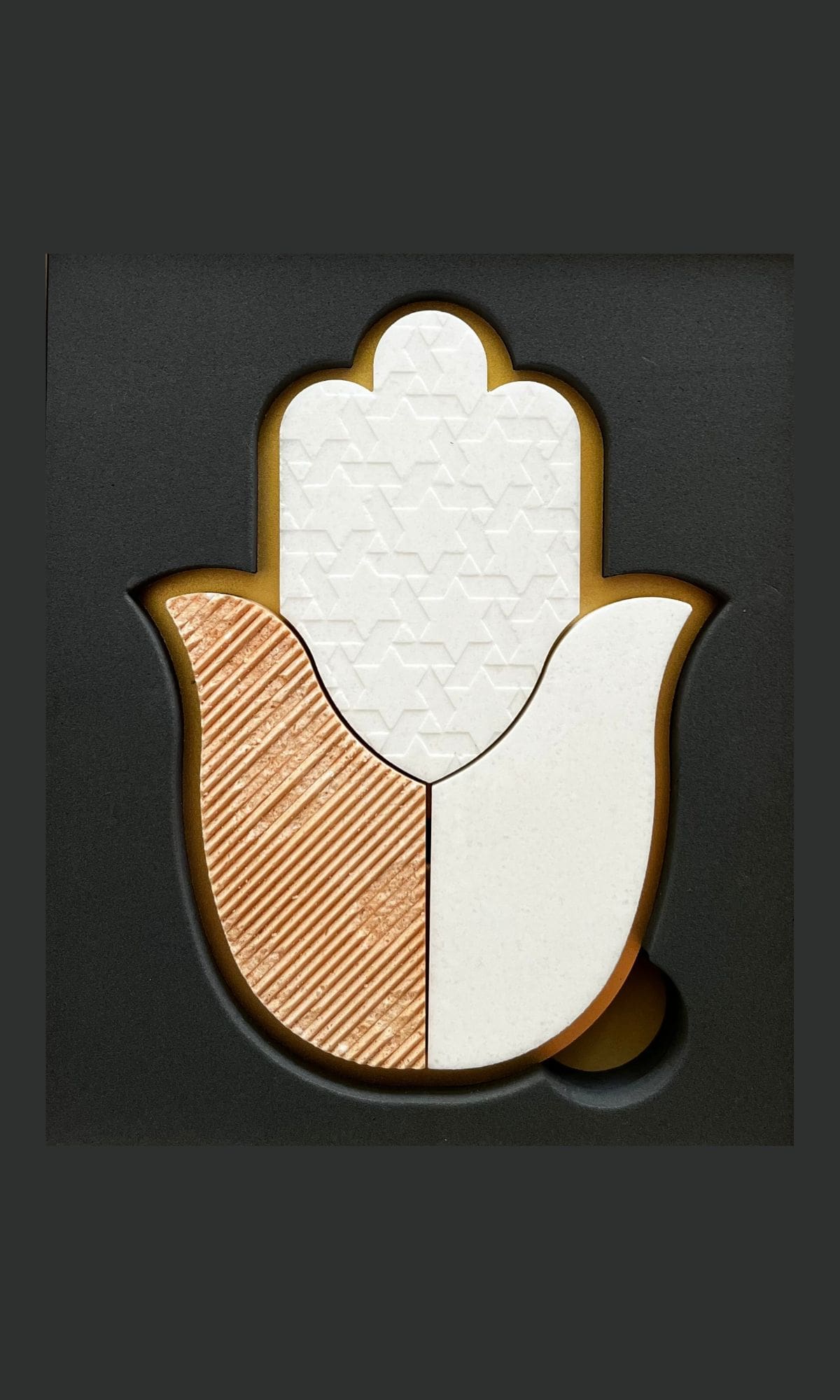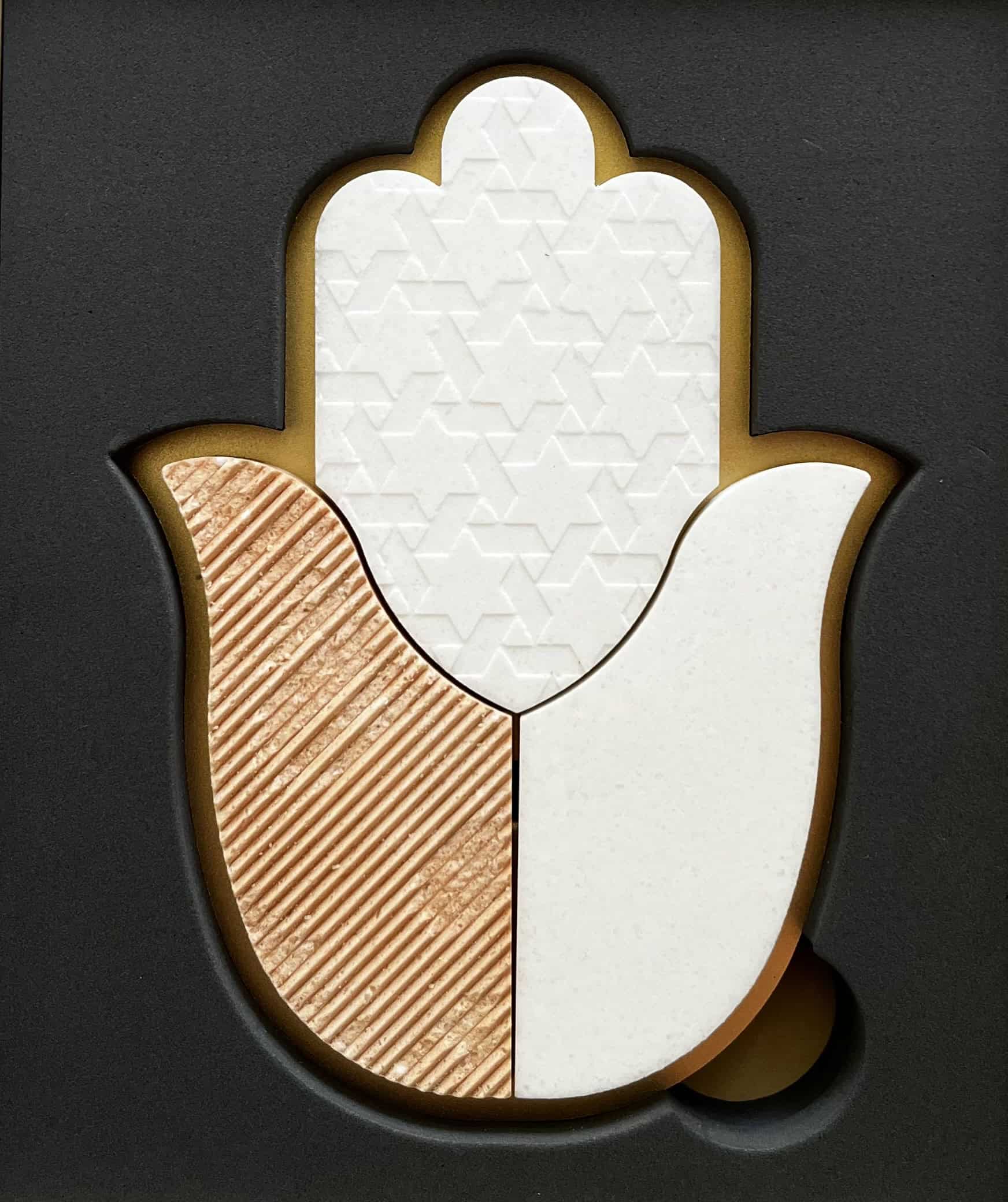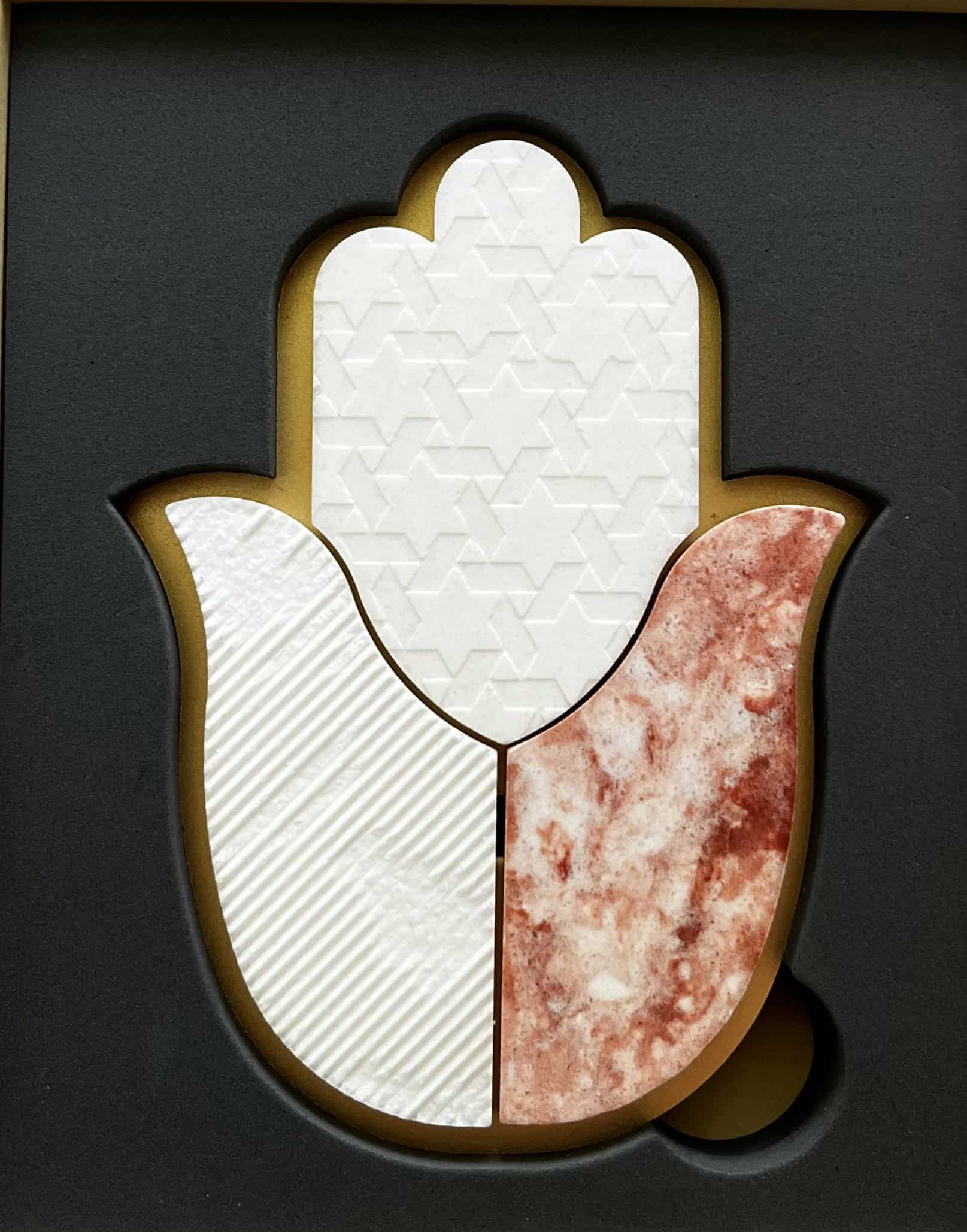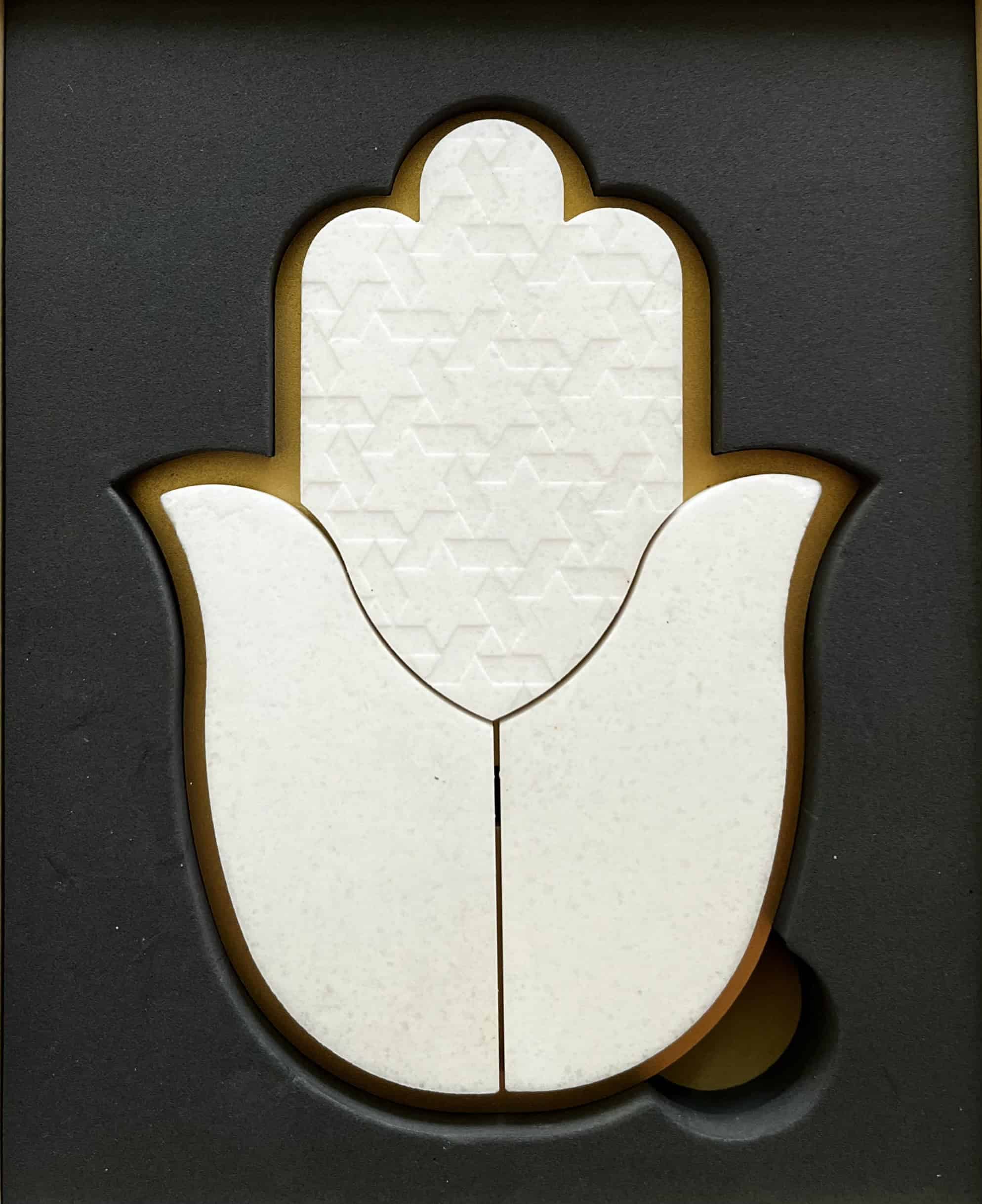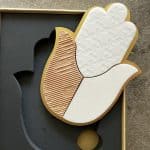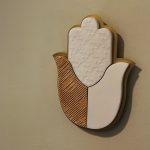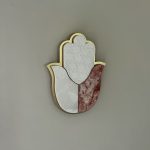Hamsa Star of David wall decor is designed of PURE SALT from the Holy Land.
It is made of 3 parts: upper part with star of david pattern embossed.
The textures of the 2 lower parts may vary and include embossing or natural pigment powders.
Please notice options.
The base is made of golden anodized aluminum with delicate satin finish and includes hanging hidden part.
Each Hamsa is uniquely handmade and therefore can differ slightly from each other.
Pendant Size:
Height: 5.7” (145 mm)
Width: 4” (103 mm)
Depth: 0.7” (18 mm)
Box size: 7 x 5.7 x 1.2” (18 x 14.5 x 3cm)
Height: 5.7” (145 mm)
Width: 4” (103 mm)
Depth: 0.7” (18 mm)
Box size: 7 x 5.7 x 1.2” (18 x 14.5 x 3cm)
1 x Hamsa Wall Decor
1X hanging set
Exclusive recycled paper box with an embossed silver white SALTWARE logo.
1X hanging set
Exclusive recycled paper box with an embossed silver white SALTWARE logo.
Shipping fees according to parcel value
USA ,CANDA, EU
| parcel value | Standard (ECO IS POST) | FedEx Economy | FedEx Priority |
|---|---|---|---|
| Delivery times | 14-21 Business days | 7-15 Business days | 3-5 Business days |
| UP to 70$ | 12$ | 25$ | 35$ |
| 71-150$ | 20$ | 30$ | 40$ |
| 151-350$ | 30$ | 40$ | 50$ |
| Above 350$ | free | 50$ | 60$ |
DOMESTIC (ISRAEL)
| parcel value | IS Post registered | Express (Door to Door) |
|---|---|---|
| Delivery Times | 3 Business Days | |
| UP to 70$ | 7$ | 20$ |
| 71-150$ | 7$ | 20$ |
| 151-350$ | free | 20$ |
| Above 350$ | free | 20$ |
Rest of the World
| parcel value | IS Post ECO | FedEX Priority |
|---|---|---|
| Delivery Times | 14-21 Business Days | 3-5 Business Days |
| UP to 70$ | 15$ | 35$ |
| 71-150$ | 30$ | 40$ |
| 151-350$ | 40$ | 60$ |
| Above 350$ | free | 70$ |
Simply wipe with a damp cloth.
Do not put under running water.
Not suitable for tropical climate use.
YOU MAY ALSO LIKE
Related products
-
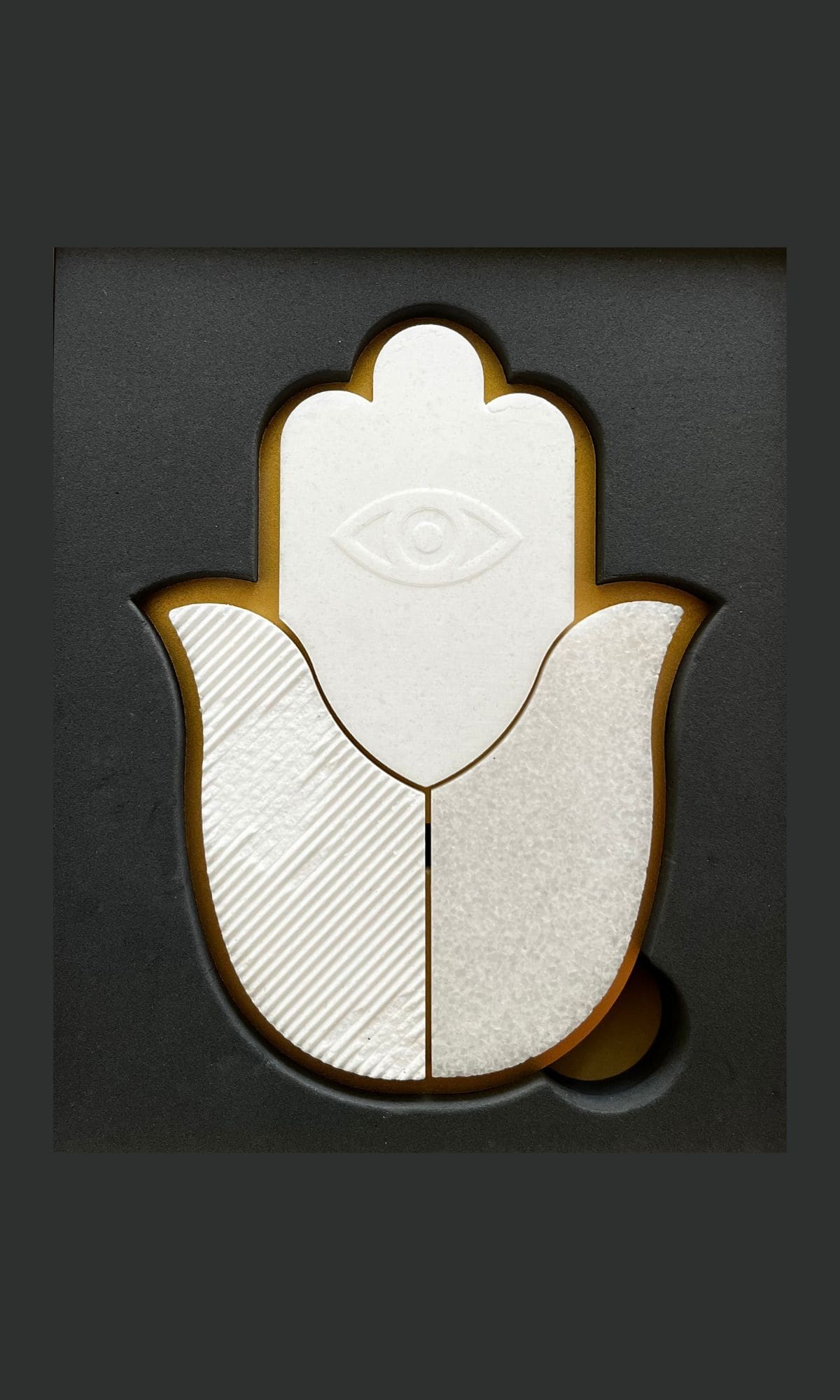
Hamsa Wall Decor Evil Eye
$146 Add to Cart This product has multiple variants. The options may be chosen on the product page

